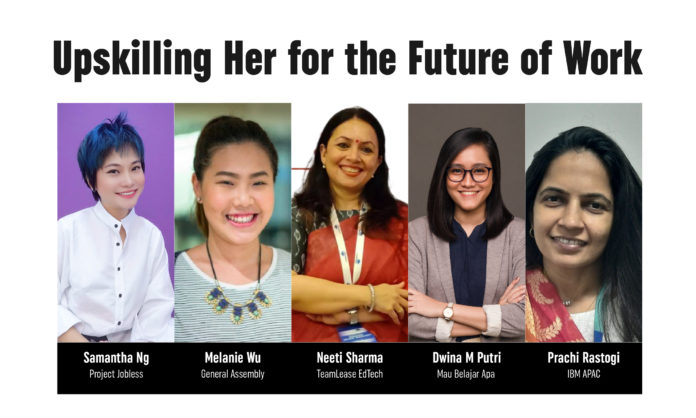Every so often, something seismic like a global pandemic happens and creates a lasting impact on the future of work.
In the span of two years, over 64 million women across the world were either furloughed or laid off while many others were forced to take a career break to deal with the challenges of the pandemic.
As the world transitions from a pandemic to endemic state, approximately 160 million women will move within and between careers from now to 2030. Others will seek out opportunities to return to the workforce. Their successful re-entry into or pivot within the global workforce is heavily dependent on their access to learning. These women know that better learning and development opportunities, stretch assignments, networking opportunities, and mentorship/sponsorship programs will improve their career agility.
However, not everyone is afforded equal opportunities to skilling up initiatives. Hence, LEARNTech Asia sat down with industry experts who shared their knowledge and experience on how working women and organizations can create better upskilling opportunities for the female workforce.
Hybrid is the way forward
One thing is clear about the future of work: the pandemic and accelerated adoption of digital technologies have made remote and hybrid workplaces the new norm.
99% of Human Resources leaders expect the global workforce to adopt and adapt to some variation of a hybrid workplace. Whether organizations expect their employees to be in the office a couple days a week, every other day or meet for in-person meetings, organizations must swiftly equip themselves and their employees with the necessary tools and skills to ensure work runs smoothly.
It is essential that “we create an open system – be honest, be transparent, be vulnerable. It is a huge but necessary step to create a healthier work culture,” said Dwina M Putri, Co-Founder and COO of Mau Belajar Apa.
Other than open communication, “organizational leaders and managers should be equipped with the skills and knowledge to create a more integrated working environment for their female workforce,” said Neeti Sharma, President and Co-Founder of TeamLease EdTech.
An integrated and open work environment requires coordination and cooperation between employers and their workforce. Employers need to be more receptive to flexible working hours and arrangements while employees must prove themselves as trustworthy, proactive, and independent individuals.
“Introduce a measurable KPI that focuses on the outcome of their performance rather than on how they go about achieving it,” said Putri.
Own your learning journey
“In a world where the pace of change is so fast, if we don’t keep up to date with our skills, we are going to lose out,” said Samantha Ng, internationally-certified Behavioral and Career Consultant and Founder of Project Jobless.
“Skills like communication and leadership have a half life of five years so imagine if you don’t build it up by the 2.5 year mark, your existing skills will be twice as invaluable and irrelevant. On the other hand, technical skills like cloud computing have a half life of 2.5 years so it is even shorter,” added Ng.
Women who want to return to the workforce or pivot their careers in this hybrid world of work need to upskill. However, not all organizations have the vision, opportunity, or leeway to make learning possible. Therefore, the onus is on the women to create learning opportunities for themselves.
Have conversations with your manager or leader about working and learning at the same time. Network with colleagues to create an informal learning space in the workplace. Reach out to colleagues for coaching and/or mentorship opportunities.
“We cannot expect to be reliant on others for our learning and career opportunities,” said Sharma.
Personalize learning opportunities for working women
That said, if employers want to attract and retain the best talent, they need to create learning opportunities that meet the needs of their potential and current female workforce.
“For example, evening classes are great for working men but not necessarily for working women who are expected to care for their household after work. That is why personalizing learning opportunities for women is essential,” said Melanie Wu, Head of Instructor Management at General Assembly (APAC).
One way to create personalized learning opportunities for women is to “have women leaders involved in the designing and planning of reskilling and upskilling opportunities because they don’t only serve as role models but they also know what these women need and want better than men leaders,” shared Wu.
Other than that, personalized learning programs such as IBM’s Tech Re-Entry Program is a great approach to upskilling women returning to the workforce.
“We don’t care why women had to take a career break. Our focus is to help them change gears when they first return to the workplace. They come in as paid interns who contribute to multiple projects in different departments and after a year or so of training, they may be hired into the company,” said Prachi Rastogi, IBM’s Diversity & Inclusion Leader (APAC).
Though the future of work is uncertain, we know that it is incomplete without women. Therefore, we need to create more personalized upskilling opportunities for women to become trailblazers of a better world.
Check out the full videos with these industry experts on our YouTube channel.




